West Durham, 1910, showing the quantity of houses owned by Erwin Mill (with the number of rooms in the house outline)
Courtesy of Duke Rare Book and Manuscript Collection, via the excellent expansion of the Durham Maps collection at Digital Durham.
By the early part of the 20th century, dozens of mill houses had been constructed to the south of Erwin Mill and the railroad tracks / West Pettigrew Street. Most of the more modest of these houses were south of Erwin Road, and, as the map above makes clear, most of these houses were mill-owned by 1910.
By the 1950s, most of the houses had become privately owned; whether piecemeal or with concerted effort, Duke began to acquire properties in the mill village.
Southern portion of the West Durham mill village, 1959.
One of the more annoying things I've ever heard a Duke administrator say was during meetings regarding Duke's plans to re-develop Central Campus. I'll paraphrase, because I can't remember the quote exactly, but the gist of it was that we were really quite lucky, because Duke has all of this underused land to expand into, rather than making incursions into Durham's neighborhoods.
Which is exactly what Duke did to create Central Campus in the late 1960s; while the city government was hacking away at the downtown neighborhoods with the scythe of urban renewal, Duke was 'renewing' the West Durham mill village, tearing down dozens of mill houses to expand its campus.
200 block of Anderson St. (east side) looking south from Erwin Road, 04.03.68
200 block of Anderson St. (east side) looking north from near Yearby, 04.03.68
Likely Acme St. (south side) looking west from Anderson, 04.03.68
Central campus, a series of apartment buildings which, I believe, were originally primarily intended for graduate students, but soon came to house undergraduates as well, was built in place of the mill village during the early 1970s.
200 Anderson St., east side, looking north from near Yearby, 04.08.09
200 Anderson St., west side, looking north from near Yearby, 04.12.09
Parking predominates in this low-slung suburban-style area; "campus" is a term used loosely, a fact which Duke realizes. To their credit, at this point, they seem to understand that Central Campus creates nothing akin to community. Having unwillingly lived on Oregon St. for a year, I can say that my personal opinion is that it's a particularly depressing place to live.
(It's also oddly similar in architecture to the Liberty Street Apartments Housing Project )
Find this spot on a Google Map.
36.006014,-78.930092

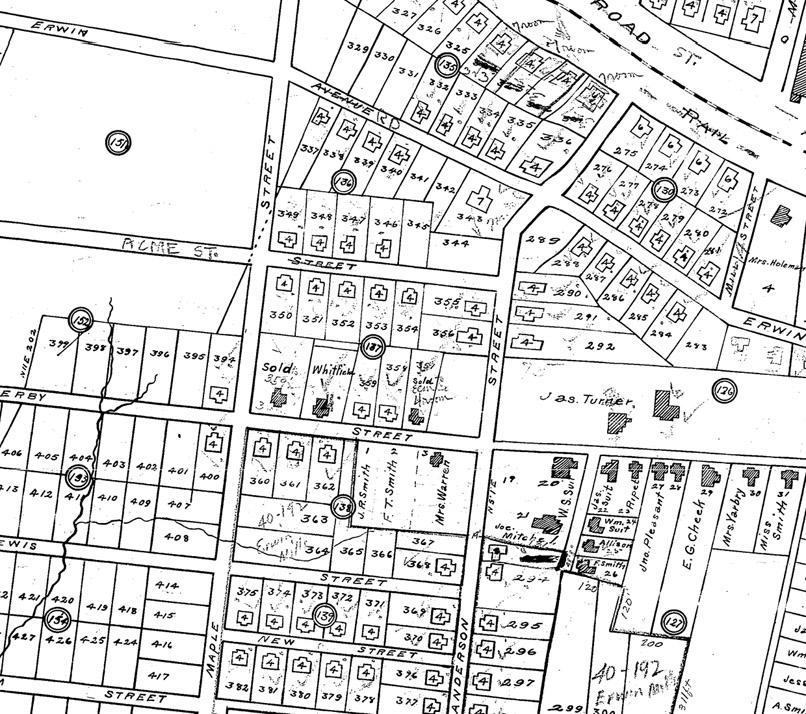
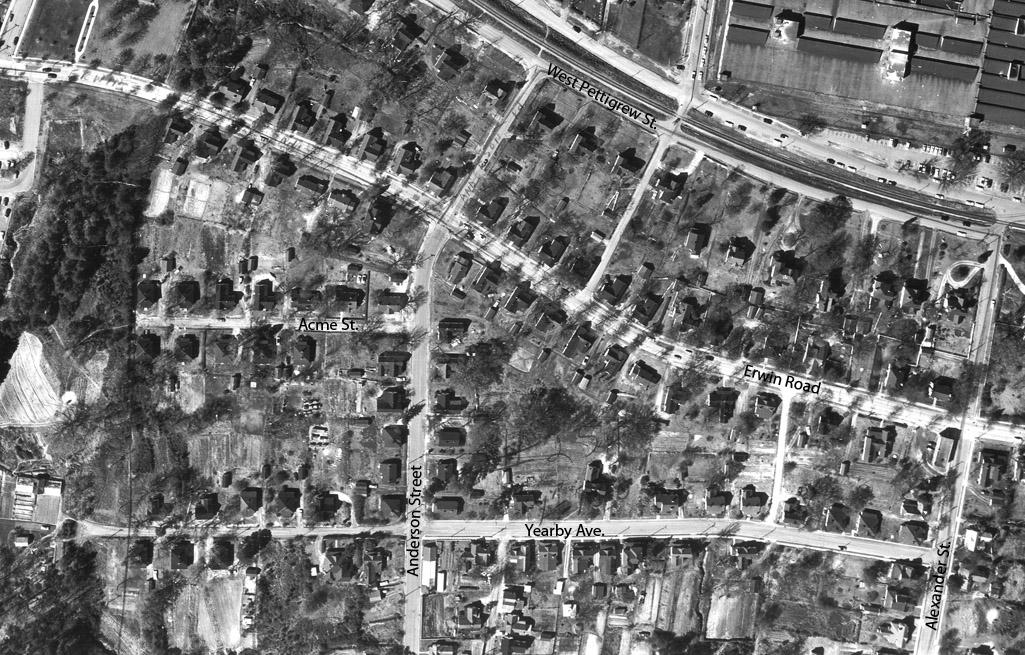
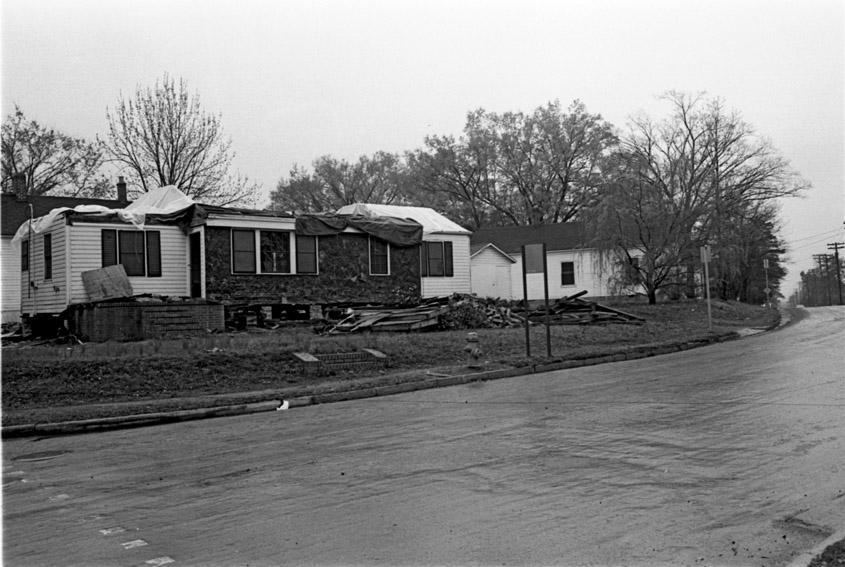
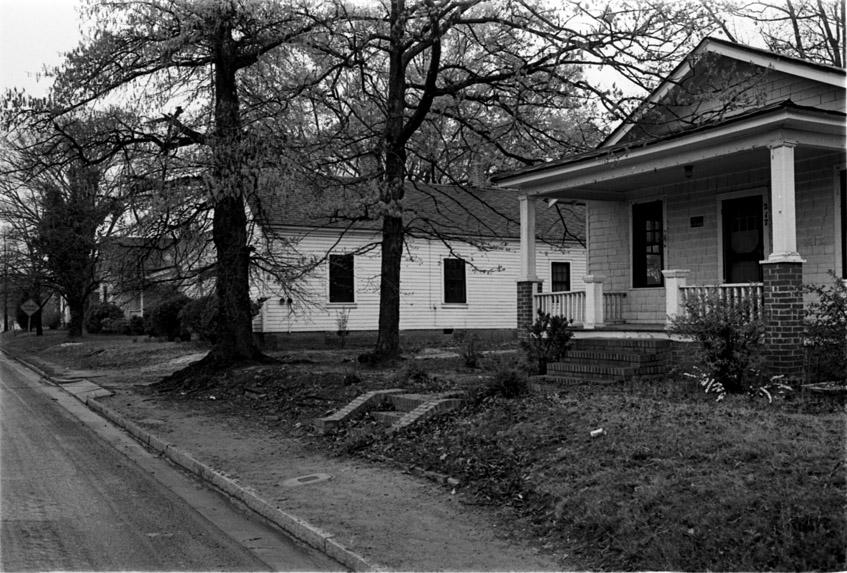
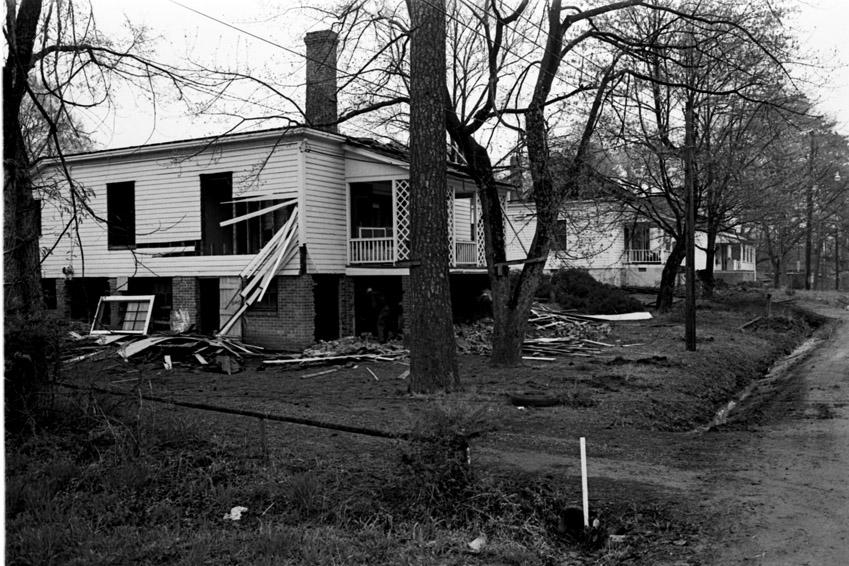
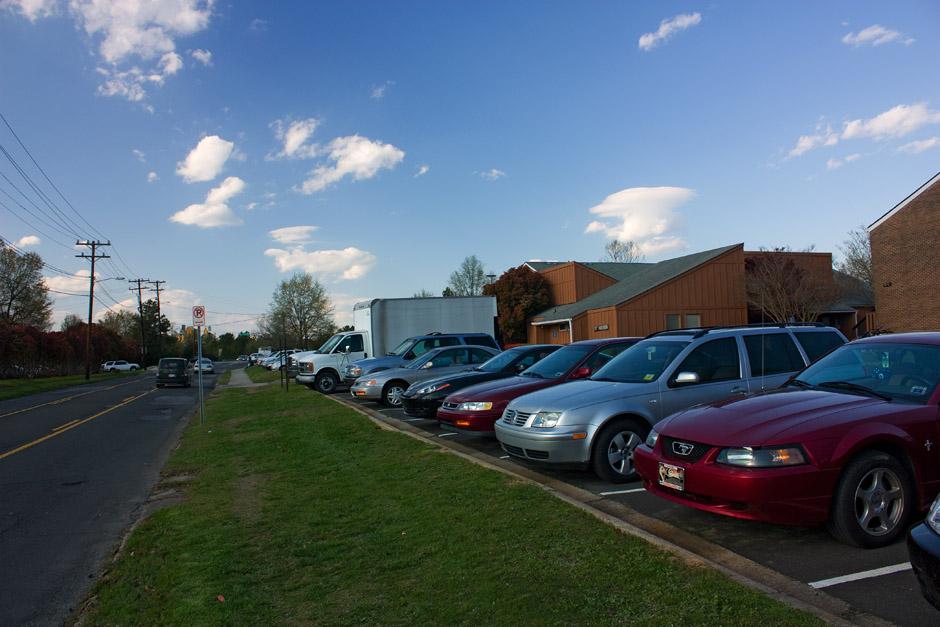

Comments
Submitted by John Schelp (not verified) on Thu, 5/14/2009 - 11:27am
Gary, thanks for telling this story and sharing these photographs.
It's sad to see what Duke has done to what was once, in its day, part of a vibrant mill village for Erwin Cotton Mills.
In the 1970s, Duke administrators went to City officials to explain that the old mill houses had small cracks in them. Worried that the cracks may get bigger, and therefore, might lead to vermin, Duke asked the City to condemn the houses. The university then demolished whole blocks of mill houses. Between Duke and the East-West expressway, Durham lost some 450 mill houses.
Only a handful remain. Under pressure, Duke has agreed to the Old West Durham Neighborhood Association's request to give away its mill houses and pay $5000 toward the cost of moving the ones that stand in the way of new buildings. (Duke later agreed to give away and contribute $10,000 in moving costs for the larger houses along Campus Drive).
Here's a 1938 WPA account of mill workers who lived in the one of the houses that remains... http://www.owdna.org/wpa2.htm (see first photo of house at 945 Case Street).
So, what's left of the mill houses torn down by Duke? The university did save the old granite curbs from the mill village. You can see them in Duke Gardens, next to the large pond where kids feed the ducks. Look down at the... stepping stones.
Add new comment
Log in or register to post comments.